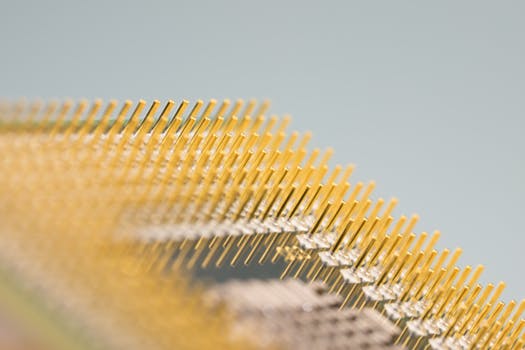
In the intricate web of electrical systems, ensuring precision and stability is undoubtedly critical. From monitoring frequencies to tracking signal strengths and recording vital data, specialized instruments play a crucial role. Among these instruments are Frequency Meters, Field-Strength Meters, and Recorders. Each serves a unique purpose, contributing to the smooth operation and maintenance of various electrical systems.
Frequency Meters
In a power system, different components are finely tuned to operate within specific AC frequencies or frequency ranges. Frequency meters play a pivotal role in verifying these patterns. Operating akin to digital voltmeters, frequency meters utilize pulse trains for counting. Following amplification, the test signal undergoes conversion to square wave pulses, typically through a Schmitt trigger stage. These pulses are then gated, shaped, and counted to ascertain frequency for display.
Field-Strength Meters
Primarily utilized with radio transmission systems, field-strength meters work to evaluate the coverage of a transmitter across its designated area. Acting as portable radio receivers tuned to transmitter frequencies, they detect radio-frequency signals, amplify them, and then convert them to DC test voltages for measurement. Available in analog or digital forms, the meters are calibrated to measure RF signal levels, often in millivolt or microvolt ranges. Their application extends to identifying signal attenuation in various terrains and structures, crucial for optimizing transmission efficiency.
Recorders
In maintaining an extensive record of test readings, recorders are indispensable. They continuously monitor circuits, recording vital parameters such as voltage, current, frequency, and waveform characteristics. Particularly critical in environments demanding pristine power quality, such as computer rooms and medical facilities, recorders ensure uninterrupted operation and facilitate troubleshooting. Available in analog paper-stylus or digital formats, they offer diverse functionalities, including real-time data retrieval and compatibility with printers and computers.
Conclusion
In the fields of electrical engineering and system maintenance, precision and reliability are non-negotiable. Instruments like frequency meters, field-strength meters, and recorders exemplify stability and efficiency, enabling meticulous monitoring and analysis. As technology advances, these instruments evolve, adapting to the ever-changing demands of modern electrical systems. With their indispensable roles, they continue to exhibit the seamless functioning of critical infrastructures worldwide.
Frequently Asked Questions
How can frequency meters be utilized in power systems?
Frequency meters are essential for verifying AC frequency patterns in power systems. They function similarly to digital voltmeters, using pulse trains for counting and converting signals to square wave pulses for frequency display.
What are field-strength meters primarily used for?
Field-strength meters are primarily used in radio transmission systems to evaluate transmitter coverage across specific areas. They detect, amplify, and convert radio-frequency signals to DC test voltages for measurement, aiding in optimizing transmission efficiency.
Why are recorders essential in maintaining power quality?
Recorders play a critical role in monitoring circuits and recording parameters like voltage, current, and waveform characteristics. They are especially vital in environments requiring pristine power quality, such as computer rooms and medical facilities, ensuring uninterrupted operation and successful troubleshooting.
What formats are recorders available in?
Recorders are available in both analog paper-stylus and digital formats. These tools offer diverse functionalities including real-time data retrieval and compatibility with printers and computers.
How Apex Waves Can Help
Apex Waves provides elevated solutions for legacy test equipment that can greatly improve testing procedures and ensure the best possible functioning of essential components.
We are proud to offer a broad range of highly valuable tools and equipment designed to handle unique issues found in various industries, such as aerospace and defense, military, and more.
To learn more about Apex Waves, our products, and selling your surplus parts, get in touch with us today!







